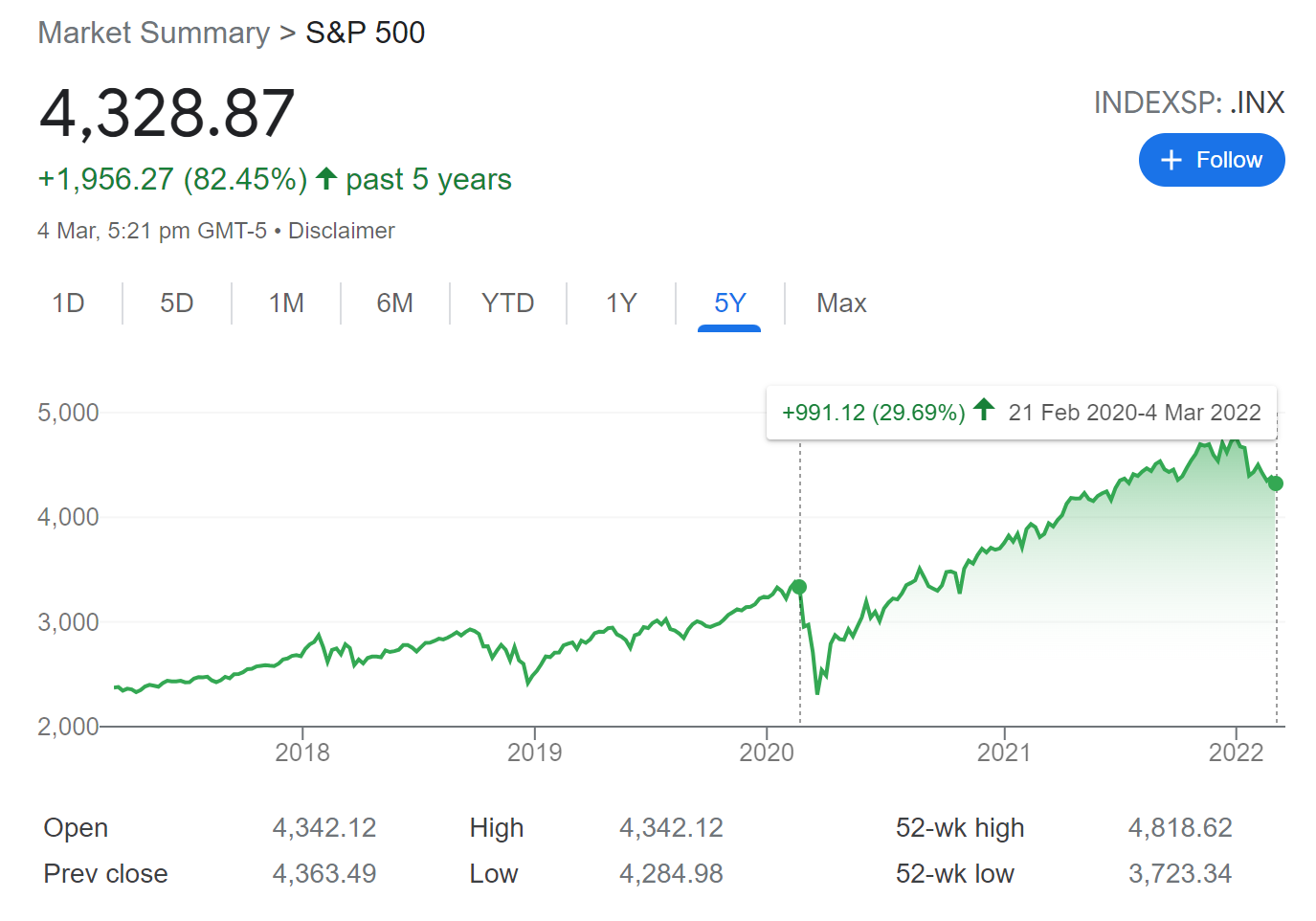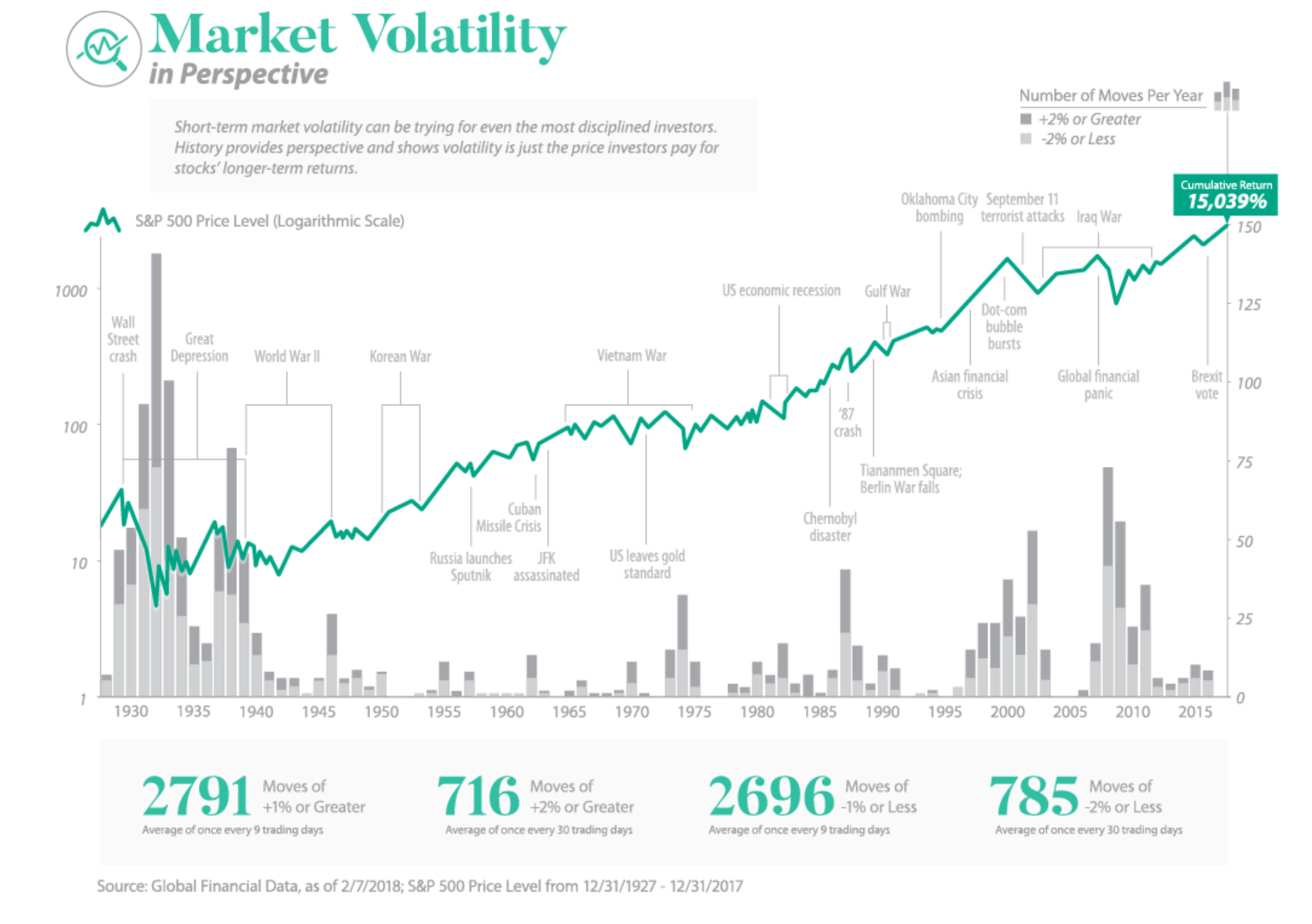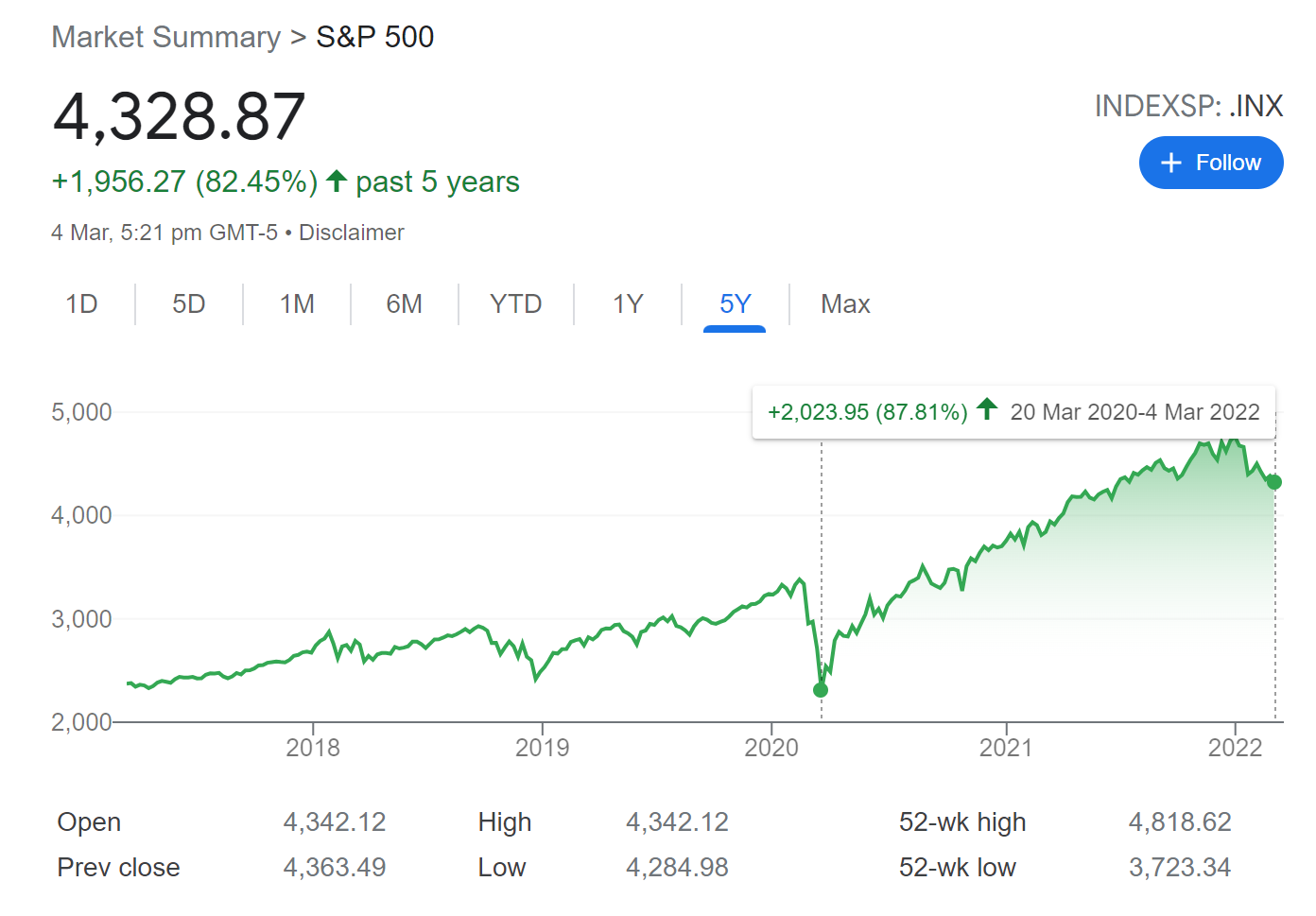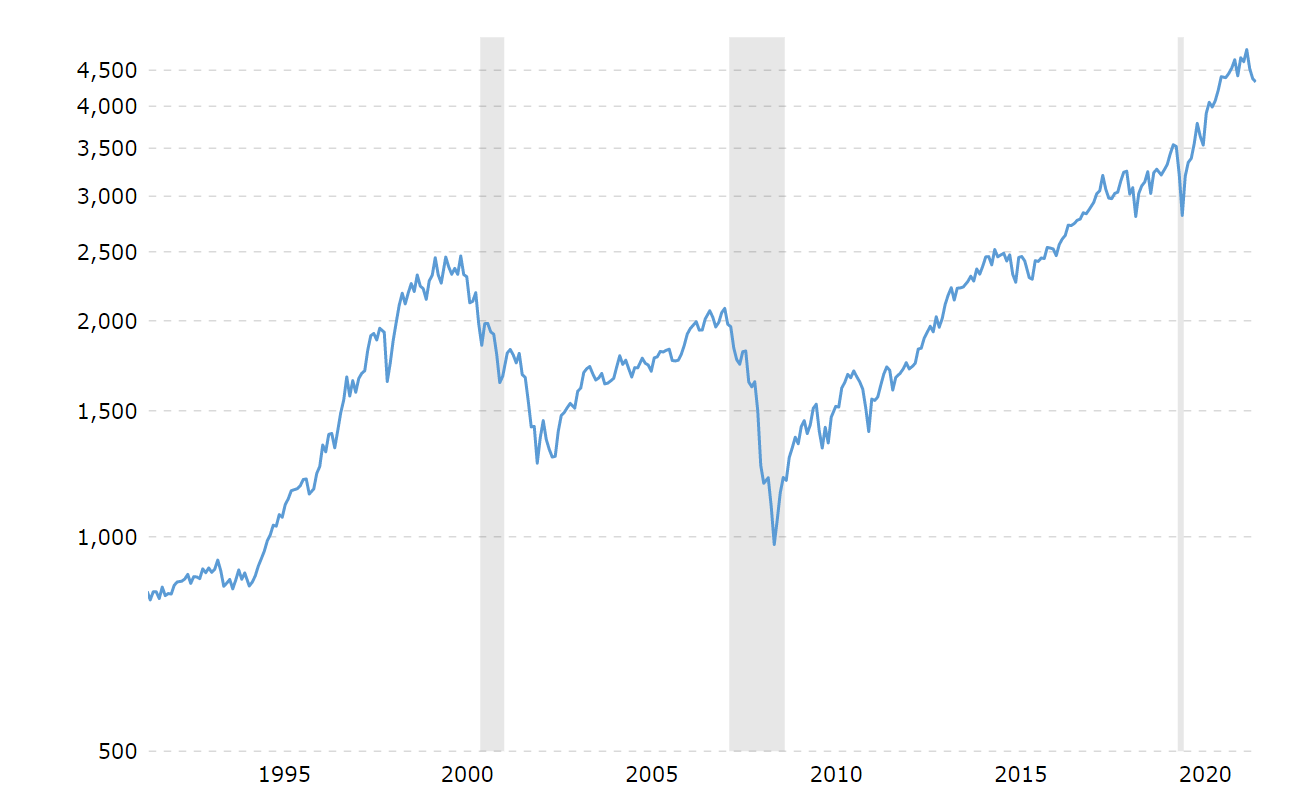COVID-19, inflation, supply chain issues, and the Russia-Ukraine war. If investors turned on the TV, they are routinely reminded by the media that the world is in a perpetual state of crisis and the worst is yet to come.
Yet, during the same ‘crisis period’ (pre-COVID drop), the S&P 500 Index returned 29.69%. (pic below)

Source: Google Finance as at 5th March 2022
Here are four tips for successful investing in volatile times:
1. Have a plan
Investors can take reference to a football game and the distinct roles performed by a football player and a football manager. A football player focuses on the game while the football manager focuses on the entire season.
When investing, are we acting as players constantly reacting to the changes and uncertainty on the field? Or are we acting as managers determining the strategy, selecting the team, training the squad, and planning multiple seasons ahead?
Here are how investors can start thinking like a football manager – by first having a game plan.
The game plan – investment planning (review once a year)
What are your investment objectives (general or specific): Retiring at 65 with S$5,000 ($3694) a month.
Time horizon: 30 years
Investment strategy: 70/30 mix of equities/fixed income in the first 20 years and staggering a 5% shift from equity into fixed income every two years thereafter.
Financial planning: Unforeseen circumstances may force investors to sell at the worst possible time. Many of these worst-case scenarios can be prevented by having adequate insurance coverage and by building up an emergency fund (approximately 6 months’ worth of living expenses).
Risk appetite: Investments are subjected to risks. While some risks are inherent, many are dependent on the above factors including investors’ age, financial goals, time horizon and insurance cover.
2. Understand volatility
During the course of my profession, I have seen many investors assuming the wrong barometer of risk – equating falling prices and increasing price volatility with rising levels of risk.
This eventually led to them selling high-quality investments simply because they were falling and facing with the prospect of further declines while holding on to low-quality investments in the hopes that they would break even someday.
Technically speaking, volatility is merely a statistical measure of the dispersion of returns over a specific timeframe. If investors believed in the strategy three months ago, why mistrust it now? Instead of focusing on the price fluctuation of their investment portfolio, which represents volatility and uncertainty more than anything else, investors would be better off focusing on the underlying business reality of their investments.
Also, when in doubt, try to look at the bigger picture to avoid any panic reaction and impulse to sell out. The below chart shows the last 90 years of market history, in both moments of high and low volatility.

Source: VisualCapitalist
3. Have a bit of a contrarian mindset
Bad times make for good buys. Remember March 2020? Now compare the returns of the first graph with the one below.

Source: Google Finance as at 5th March 2022
Peak pessimism periods are an effective way to expand positions into high-quality investments that were previously deemed too expensive or too ‘hot’. A huge part of successful investing is not to avoid or time the market but to accept that peak pessimism periods will happen at some stage of investing and having a game plan to benefit from it. Here’s how:
“I’ve been putting in 1% to 1.5% to work on every down day” - Mark Cuban on CNBC’s Squawk Box during March 2020.
Investors can also benefit from adopting a dollar-cost averaging strategy (DCA). DCA is the systematic approach of allocating capital over regular intervals, regardless of stock price. DCA can also be applied during short periods of peak pessimism, like how Mark Cuban did.
4. Be patient and enjoy the rewards
The idea of buy and hold is simple, but realistically, not easy to execute. Historically, investors can buy at the worst possible time and still compound wealth over a period of 30 years in SPY*.

Source: Macrotrends S&P 500 Index – 30 years log chart with recessions in grey
*SPY is the SPDR S&P 500 ETF designed to track the S&P 500 stock market index
The effects of compounding even moderate returns over many years are mind-boggling. Here’s an example - Imagine if your parents told you they had invested S$10,000 into Apple 30 years ago and are still holding on to them, the same investment would be worth S$4m today.
The temptation to take profits and time the market prevents many investors from generating significant wealth and may even jeopardise their financial goals in the long run. Rather, investors should allow volatility, long-term investing planning, along with leveraging the benefits of compounding effects and a dash of contrarian thinking to work as allies in their journey of wealth creation.
Want to find out more?
If you’re interested to stay on top of your investment game plan during these turbulent times, reach out to a Manulife Financial Advisers (Manulife FA) representative and we’ll be glad to share with you some actionable insights to map out your next steps.
Disclaimer:
The author is a self-employed representative of Manulife Financial Advisers Pte Ltd. Views and opinions expressed in this article are those of the author and do not necessarily represent official policy or position of Manulife Financial Advisers Pte Ltd.

Chariot Tan
Assistant Vice President, Financial Services
Manulife Financial Advisers Pte Ltd
Chariot Tan is a service champion and the winner of Manulife’s Everyday Better Maker (Asia Pacific) Award. He is also a Million Dollar Round Table (MDRT) recipient and a Million Dollar Round Table Leader.
In his free time, Chariot writes regular newsletters to his clients and is a strong proponent of the three pillars of financial planning – Adequate Insurance, Appropriate Allocation & Investing Long-term. His team won five out of the top 10 positions in Manulife Investment Management Portfolio Management Challenge 2021 and its clientele includes executives and affluent families in Asia.
Families in Asia prefer Chariot for his unique market insights, cultural knowledge, and his extensive network. Chariot speaks fluent English and Mandarin.